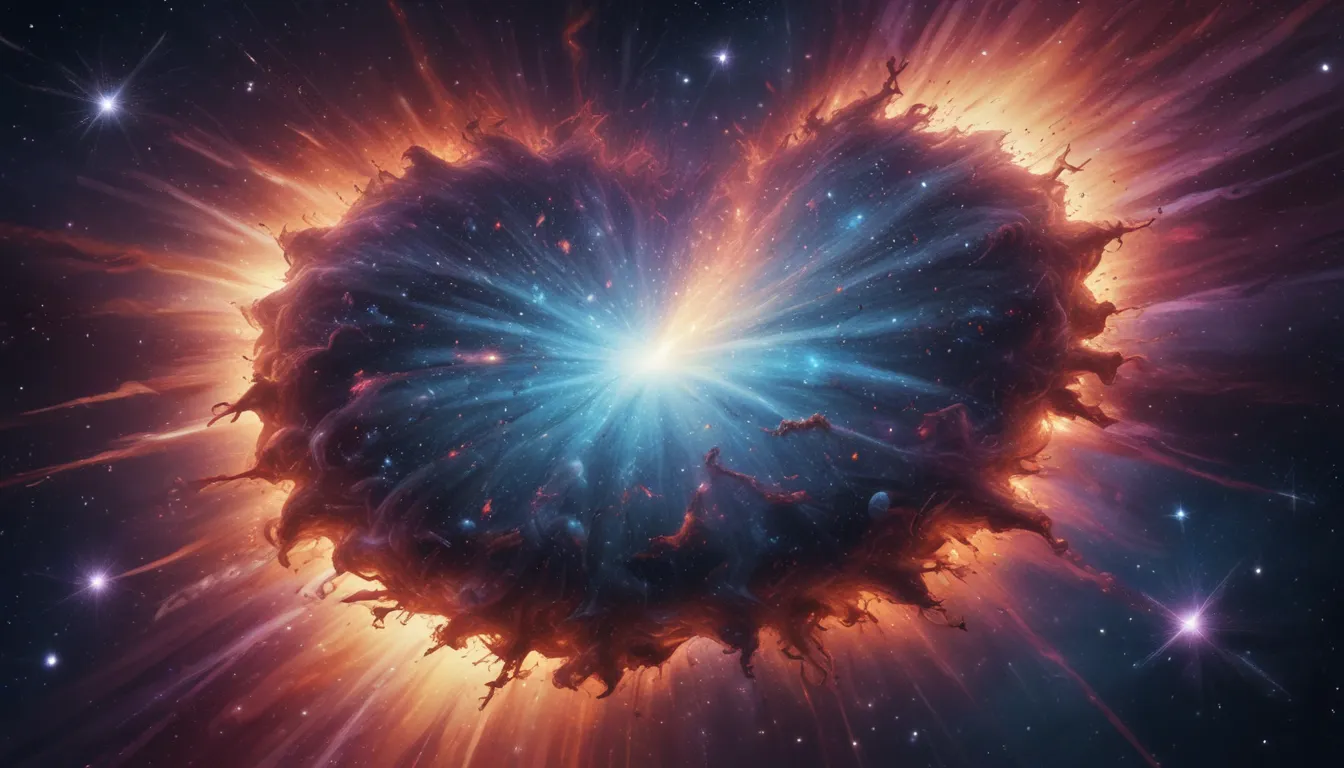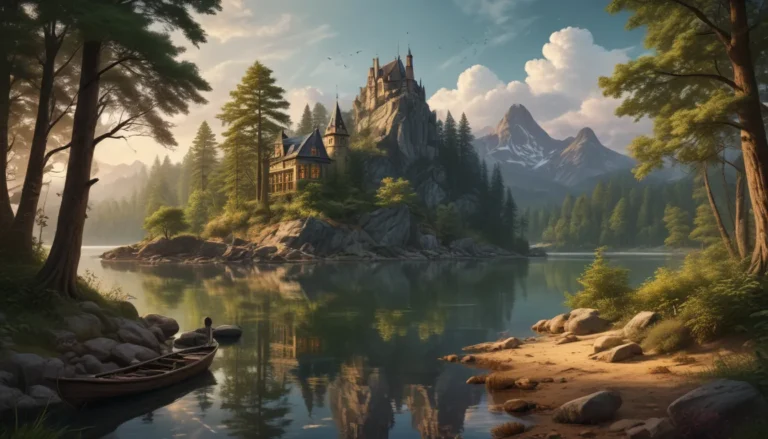The pictures we use in our articles might not show exactly what the words say. We choose these pictures to make you interested in reading more. The pictures work together with the words but don’t take their place. The words still tell you the important facts.
Welcome to the captivating world of starburst galaxies, where intense bursts of star formation create a dazzling display of cosmic wonders. These galaxies, characterized by their rapid and chaotic creation of new stars, offer a unique glimpse into the dynamic and enigmatic nature of the universe. Join us as we explore 15 intriguing facts about starburst galaxies, from their formation and structure to their impact on the surrounding cosmos.
Unraveling the Enigma of Starburst Galaxies
Starburst galaxies are cosmic marvels that defy convention with their intense star-forming activity and unique features. Here are some key takeaways that shed light on the mystique of these captivating objects:
- Starburst galaxies are like cosmic fireworks, bursting with intense star formation, infrared radiation, and chaotic structures, offering a glimpse into the universe’s dynamic and enigmatic nature.
- By studying starburst galaxies, scientists can unlock the secrets of the early universe, understand stellar evolution, and unravel the mysteries of cosmic evolution, like detectives piecing together the story of the cosmos.
The Stellar Symphony of Starburst Galaxies
-
Intense Star-Forming Activity: Starburst galaxies are known for their rapid and intense formation of new stars, leading to high rates of star formation within a relatively short period of time.
-
Copious Infrared Radiation: Due to the high amounts of dust and gas in starburst galaxies, they emit significant amounts of infrared radiation, making them easily detectable by infrared telescopes.
-
Triggered by Interactions or Mergers: Interactions or mergers with other galaxies can induce the intense star formation activity in starburst galaxies, leading to their distinctive appearance.
The Cosmic Canvas of Starburst Galaxies
-
Higher Concentration of Massive Stars: Starburst galaxies are known to have a higher concentration of massive stars compared to normal galaxies, contributing to their overall luminosity.
-
Galaxy Cluster Dwellers: Many starburst galaxies are located within galaxy clusters, where gravitational interactions and close encounters with other galaxies are more common.
-
Exceptionally High Star Formation Rate: Starburst galaxies have a star formation rate that is remarkably higher than that of typical galaxies, with some producing thousands of new stars each year.
Unveiling the Cosmic Forces Within Starburst Galaxies
-
Powerful Galactic Winds: Due to the intense star formation activity, starburst galaxies can generate strong galactic winds that blow out gas and dust from the galaxy, affecting its evolution.
-
Chaotic and Irregular Structures: Starburst galaxies often have irregular shapes and distorted structures, caused by the gravitational forces and interactions involved in the star-forming process.
-
Fertile Ground for Stellar Evolution: Studying starburst galaxies provides valuable insights into the processes of stellar evolution, as the rapid star formation allows for observations of various stages of star development.
Peering into the Heart of Starburst Galaxies
-
Harboring Supermassive Black Holes: Starburst galaxies sometimes harbor supermassive black holes at their centers, which can have a profound impact on the galaxy’s evolution and star formation processes.
-
Multiple Generations of Stars: The intense star formation activity in starburst galaxies can result in the formation of multiple generations of stars, each with different properties and characteristics.
-
Formation of Globular Clusters: Starburst galaxies play a crucial role in the formation of globular clusters, which are dense groups of stars that can contain hundreds of thousands or even millions of stars.
Illuminating the Energy Sources of Starburst Galaxies
-
Primarily Starlight Energy Source: The energy radiated by starburst galaxies is predominantly derived from the intense starlight produced by the high rate of star formation within them.
-
Intense Regions of Ionized Gas: Due to the presence of hot, young stars, starburst galaxies often exhibit regions of ionized gas, which emit distinctive spectral lines that can be observed and studied.
Deciphering the Secrets of the Universe with Starburst Galaxies
- Insights into the Early Universe: Studying starburst galaxies provides valuable insights into the conditions and processes that occurred in the early universe, allowing astronomers to unravel the mysteries of cosmic evolution.
Unveiling the Cosmic Enigma
In conclusion, starburst galaxies continue to captivate scientists and enthusiasts alike with their vibrant and dynamic cosmic landscapes. These celestial wonders offer a fertile ground for studying stellar evolution and cosmic processes, shedding light on the mysteries that shape the cosmos over time. The 15 facts discussed above only scratch the surface of the intriguing nature of starburst galaxies. As technology advances and our understanding grows, we can expect to uncover even more secrets within these enigmatic cosmic entities.
FAQs: Exploring the Universe of Starburst Galaxies
- Causes of Starburst Galaxy Formation: A starburst galaxy is typically triggered by a gravitational interaction or collision with another galaxy, leading to the rapid formation of new stars.
- Duration of Starburst Phases: The starburst phase in a galaxy can range from millions to tens of millions of years before transitioning to a more quiescent state.
- Commonality of Starburst Galaxies: While not as common as other galaxies, starburst galaxies are relatively abundant in the universe, especially during the early stages of galaxy formation.
- Presence of Black Holes: Starburst galaxies often contain supermassive black holes at their centers, shaping the galaxy and regulating its star formation activity.
- Observing Starburst Galaxies: Starburst galaxies can be observed from Earth using powerful telescopes, showcasing their bright regions of active star formation.
- Influence on Surrounding Space: The energy and stellar winds produced by starburst galaxies can impact the surrounding interstellar medium, heating the gas and triggering new star formation.
- Transition to Quiescent State: Starburst galaxies can eventually transition to a more quiescent state as their star formation rate decreases over time.
- Local Starburst Galaxies: Several starburst galaxies exist in our cosmic neighborhood, such as the Antennae Galaxies and NGC 253, relatively close to the Milky Way.
- Methods of Study: Scientists study starburst galaxies using various observatories, analyzing the galaxy's emissions across different wavelengths to understand its properties and processes.
- Habitability in Starburst Galaxies: While habitable planets are theoretically possible in starburst galaxies, the intense star formation and cosmic disturbances present challenges for stable planetary systems to form and survive.
Embark on a journey of discovery with starburst galaxies, where each fact unveils a new layer of cosmic complexity and wonder. As we delve deeper into the mysteries of these enigmatic objects, we gain valuable insights into the formation and evolution of galaxies, offering a glimpse into the cosmic forces that shape our universe. Join us in exploring the boundless realms of starburst galaxies and unraveling the enigma of these celestial wonders.






